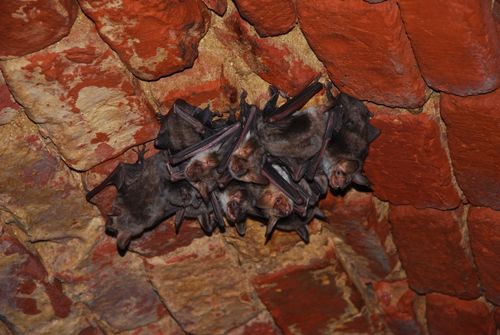Bat conservation needs churches
Slovenia is home to several bat species. They mostly occur in forest environments. But they also feel comfortable in human-made environments. So, it’s time to harmonize the conservation of cultural goods and nature. The Gorička Krajina-project addresses both.

With the aim to project and enhance living conditions and habitats of endangered species in Goričko Nature Park, a Natura 2000 site, the Gorička Krajina-project in northeastern Slovenia protects suitable bat habitats. One of several target animal species in the project are three bats species. Due to habitat loss and degradation these species are found more often in buildings like churches, castles and abandoned houses. For example, the biggest maternity roosting site of the greater mouse-eared bat (Myotis myotis) in Goričko Nature Park area lies in the attic of the church of Assumption of Mary in Grad.
To protect the bats, the Goričko Nature Park Public Institute (GNPPI) cooperates with the local church administrations. Recently, these two institutions organized several cleaning actions to remove old guano feces and other organic waste in church attics. In the church of Assumption of Mary a wooden platform was also built to protect the bell mechanism and to ensure a calmer environment for the bats.
Also, special lights with masks to prevent excessive light pollution have been installed at church and chapel reflectors. These masks shall not only decrease negative effect on the bats, but also negative effects on human health. Ever since, Goričko Nature Park has become a much more bat friendly region.
The Gorička Krajina-project is managed by GNPPI and co-funded by the European Regional Development Fund as well as the Republic of Slovenia.
